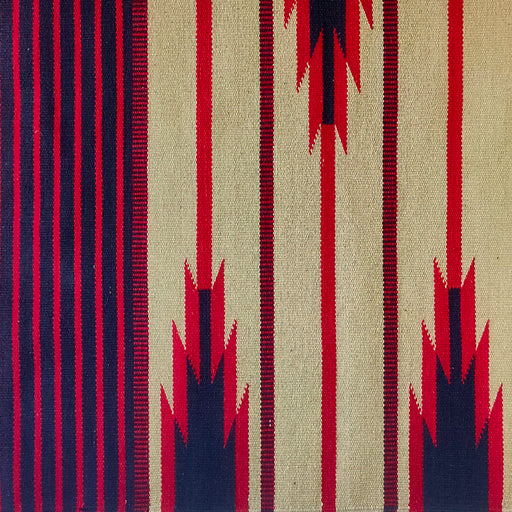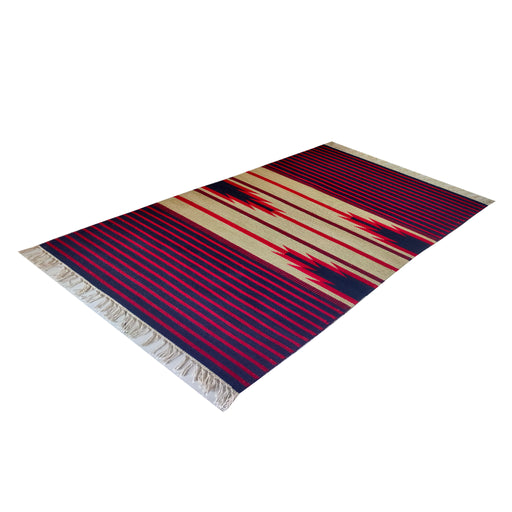Warangal Handloom Dhurries
-

 Original price ₹895.00 - Original price ₹895.00Original price ₹895.00₹995.00₹995.00 - ₹995.00Current price ₹995.00| /
Original price ₹895.00 - Original price ₹895.00Original price ₹895.00₹995.00₹995.00 - ₹995.00Current price ₹995.00| /Reversible Handloom Warangal Dhurrie in Red, Navy Blue and Beige
Laxmi Narayana
Made to order. Making time: 15 daysNo reviewsThis reversible handloom Warangal dhurrie is certain to add grace to any space - be it the bed room or living room in your home or the reception or...
View full detailsOriginal price ₹895.00 - Original price ₹895.00Original price ₹895.00₹995.00₹995.00 - ₹995.00Current price ₹995.00| /
The background | Warangal handloom dhurries
Warangal handloom dhurries may be traced back to when the Mughal army entered the Deccan region of Southern India. It is inspired by the jainamaaz, or the flat-weave prayer rug used by people in the late 1600s. Today, Warangal dhurrie weavers primarily belong to the Padmasali community and the craft is practised by people individually or as part of co-operatives.
The theme | Warangal dhurrie patterns
Warangal dhurries are known for their geometric and angular patterns in India and in international markets. Floral and tribal patterns are also common. In terms of design and structure, dhurries are available in flat-weave patterns as well as flat-weave with raised weft patterns; the former is said to be sturdier due to the “compactness of the weft”. It is also considered to be the more preferred form of the Warangal dhurrie due to its symmetrical designs and the simplicity of its pattern structure.
But what are designs without hues? When it comes to colour, red and blue still reign supreme, with neutral hues balancing their vibrancy.
The ingredients | The prerequisites for Warangal dhurries
The dhurries are mostly made using of cotton yarns, with wool or jute making occasional appearances. Sometimes, artisans may add linen, viscose, and/or polyester to give the dhurries a more contemporary look.
The method | Preparing Warangal handloom dhurries
The traditional handloom dhurries are woven on pit looms and frame looms. As a pre-weaving step, the yarns are dyed in desired colours depending on the design in mind. Generally, only the yarns to be used in the weft are dyed. White or natural beige-coloured yarns are used in the warp. Conventionally, the yarns would be starched and/or bleached to add stiffness to them. Once ready, both the warp and weft yarns are set on the handloom and interlocked into beautiful dhurries with symmetrical patterns.
The present | Warangal dhurries today
Warangal dhurries of Telangana were granted a GI Tag in 2018 but the handloom dhurries are facing stiff competition from their power-loom counterparts, despite the fact that handloom dhurries are more durable. Each handloom dhurrie is also unique since no two handcrafted products can ever be exactly the same. On the design front, the patterns have evolved to include both religious and non-religious motifs within the borders of the mats; and the overall scope of Warangal dhurries has expanded further due to the inclusion of ikat and kalamkari techniques and patterns.


